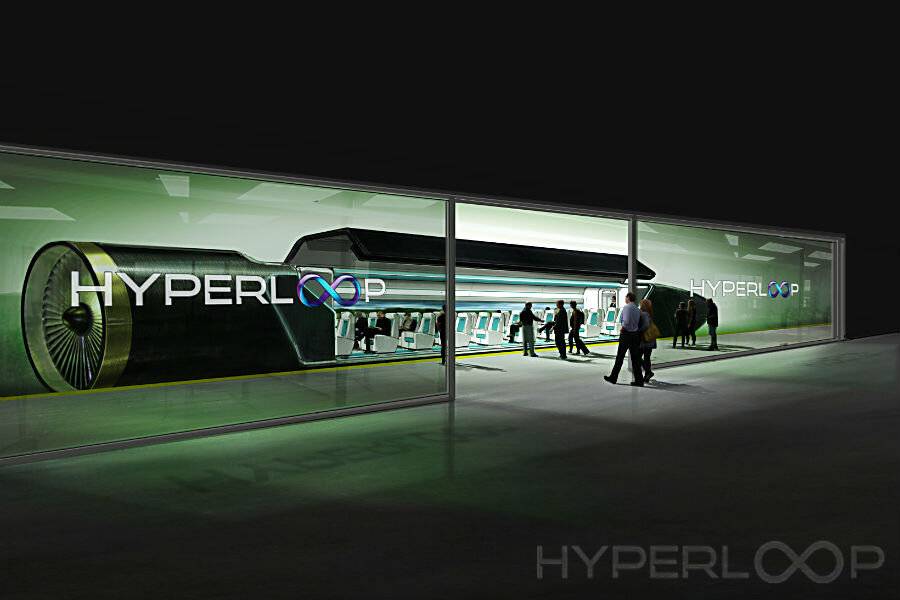Which Hyperloop tech will come out on top?
Loading...
Entrepreneur and inventor Elon Musk’s SpaceX continues development on his futuristic Hyperloop system, but competitors are also working on establishing a foothold in the market and making his high-speed pipe dream a reality.
The Hyperloop, originally proposed by Mr. Musk in 2013, is a “fifth mode” of transportation, after planes, trains, cars, and boats, that would be a variation on high-speed rail. The Hyperloop consists of “a tube over or under the ground that contains a special environment,” used to carry people or supplies at speeds of more than 700 miles per hour – far faster than any contemporary commercial transportation.
While Musk acknowledged many potential problems and shortcomings the Hyperloop could present in transitioning from design to reality, and some critics have been quick to discredit its chances of success, the concept has already attracted several teams eager to facilitate its advancement.
SpaceX has been working on the idea since its inception, and has invited others to design and test their own Hyperloop systems. Start-up companies such as Hyperloop Technologies and Hyperloop Transportation Technologies, Inc. (HTT) have moved on with Musk’s initial plans.
On Monday, HTT announced its next step toward building a functioning Hyperloop with “passive magnetic levitation” technology "exclusively licensed" from physicist Richard Post, who passed away this past year. Dr. Post’s work would be a necessary facet of a complete Hyperloop, as such a system would need to function with little to no friction on its transportation pods within its tubing, and passive magnets could be a lower-cost solution than the active systems currently in use on maglev trains around the world.
“Utilizing a passive levitation system will eliminate the need for power stations along the Hyperloop track, which makes this system the most suitable for the application and will keep construction costs low,” HTT chief operating officer Bibop Gresta said in a statement.
“From a safety aspect, the system has huge advantages,” Mr. Gresta added, as any operational failures would result in pods slowly coasting to a stop rather than rapidly dropping or crashing.
HTT’s notice came one day before rival Hyperloop Tech is set to announce “major updates” during a demonstration of progress on its own system.
HTT also recently signed an agreement with the Slovakian government to explore the implementation of its technology across Europe.
HTT is currently developing a miles-long test track for its Hyperloop system in Quay Valley, Calif., while Hyperloop Tech continues work in North Las Vegas, Nev. SpaceX’s version could be tested near the company's Hawthorne, Calif., headquarters, although Musk previously tweeted the track could be built in Texas.
Musk eventually wants his Hyperloop to follow the portion of Interstate 5 running from Los Angeles to San Francisco. He estimates the new transit system would allow for travel “from county line to county line” within 35 minutes, and cost $6 billion.
A high-speed electric rail connecting the two urban centers has been in the works for years, with plans for the 800-mile system to be online by 2030. That train would send passengers across California at speeds up to 220 miles per hour.
Hyperloop technology is still only theoretical at this point, as no functioning full-scale systems have yet been built nor has any of the Hyperloop companies acquired the land or resources to build hundreds of miles of tubing. Still, Hyperloop Tech chief executive officer Rob Lloyd thinks that the growing industry will still be a success.
“The interest that we see coming in from around the world, about the applications of Hyperloop is just astounding,” Mr. Lloyd told CNBC. “A global movement ... says we want something different, and we believe Hyperloop can be part of the solution in the future.”








